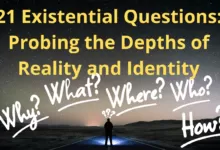Recognizing ADHD Symptoms and Signs in Adults

Imagine this – you’re at your desk with a to-do list. But your mind keeps jumping around. It thinks about the ticking clock, the emails, and a forgotten errand. This is what it’s like for those dealing with ADHD symptoms. In adults, these symptoms blend into life, often unnoticed. Yet, identifying ADHD symptoms in adults is key. It helps us understand and manage a condition that affects every part of life.
ADHD can make you feel restless, like you’re always searching for something. It leads to quick decisions that might not be the best. Recognizing ADHD signs is both freeing and challenging. The chaos of attention deficit hyperactivity disorder symptoms doesn’t just end in childhood. It continues into adulthood, changing how we face work and relationships.
This conversation is crucial for growth and healing. It helps us understand ADHD in ourselves and others. This understanding bridges the gap between struggling alone and finding mutual support.
Today, we start an important journey towards recognizing ADHD symptoms and signs in adults. With every step, we move towards a world of empathy and support. Here, people with ADHD don’t live in shadows. Instead, they live in the light of understanding and help.
Understanding ADHD in the Adult Population
ADHD is not just for kids; it affects about 2.5% of adults too. Recognizing the symptoms of ADHD is key. It helps improve one’s lifestyle and work performance.
The Prevalence and Impact of Adult ADHD
Many adults with ADHD don’t know they have it. They might not get diagnosed until later in life. ADHD symptoms persist over time and can trouble adults in work and relationships. The condition often hurts self-esteem, leading to a negative view of oneself.
Developmental Continuity: Symptoms from Childhood to Adulthood
Adults with ADHD may be less hyperactive but still have trouble focusing. They may act impulsively too. It’s essential to recognize how ADHD changes from childhood into adulthood. Even with excitement for tasks, staying focused can be hard.
The Importance of Early Identification and Management
It’s crucial to spot ADHD early in adults. This can prevent further issues and help manage it better. With the right help, such as therapy or lifestyle changes, challenges become easier. This makes life smoother for those with ADHD.
Recognizing ADHD symptoms in adults is the first step to getting better. It leads to the support and structure needed for a rewarding life. Becoming informed and active in managing ADHD is vital for success.
ADHD Symptoms and Signs
Identifying ADHD symptoms in children and understanding the signs of ADHD in toddlers can help with better management. It’s crucial to recognize these signs early. They may evolve into ADHD behavioral symptoms that impact individuals into adulthood.
Core Symptoms: Inattention, Hyperactivity, Impulsivity
Inattention within ADHD means often not being able to focus on tasks. This can lead to not finishing projects. Hyperactivity is more than restlessness; it’s a constant need to move. Impulsivity leads to quick decisions without thinking of the future.
Behavioral Indicators: Organization and Time Management Challenges
ADHD’s impact on behavior significantly disrupts daily activities. Problems with organization can create a messy living and working area. Time management issues result in being late and missing appointments. ADHD affects how a task is done, and how daily routines are planned and executed.
Emotional Dysregulation and Its Consequences
The emotional ups and downs in ADHD are notable. Emotional dysregulation means struggling to control emotions, leading to intense mood swings and frustration. This aspect, though less mentioned, significantly affects social interactions and self-esteem.
| Age Group | Common ADHD Symptoms | Behavioral Indicators | Emotional Dysregulation |
|---|---|---|---|
| Toddlers | Excessive movement, tantrums, resistance to napping | Difficulty with transitions, short attention spans | Sudden mood changes, intense emotional outbursts |
| Children | Forgetfulness in daily activities, inability to stay seated | Disorganization with belongings, trouble following instructions | Impatience, irritability when asked to wait |
| Adolescents | Persistent inattention, unfinished tasks, fidgeting | Poor time management, missed deadlines | Heightened sensitivity to criticism, rejection |
Recognizing these traits across developmental stages is crucial. It helps in providing right interventions and guiding those affected towards growth and understanding.
Common Misconceptions and Differential Diagnoses
Understanding ADHD signs requires a fine balance. It’s important to tell apart normal behaviors from those hinting at ADHD. Often, it’s tough to differentiate everyday distractions from ADHD warning signs. Or, we might not take these signs seriously, thinking they’re just quirks. It’s crucial to look at these behaviors through a clinical perspective while avoiding common misconceptions.
Misinterpreting Normalcy vs. ADHD Traits
We need to look at all symptoms and how they affect daily life, not just momentary forgetfulness or high energy. A true ADHD diagnosis is based on a long-term pattern of disruptive symptoms. These symptoms often start in early childhood. To diagnose accurately, doctors must review one’s history and how their functioning is impaired over time.
Distinguishing ADHD from Anxiety, Depression, and Mood Disorders
It’s vital to correctly diagnose ADHD, as it can look like other mental health issues. Anxiety can cause distractibility, and depression can lead to fatigue, just like ADHD. Healthcare providers work hard to identify where symptoms are coming from. They determine if they’re due to ADHD, another disorder, or perhaps both.
ADHD and Co-existing Psychological Conditions
ADHD often comes with other mental health conditions. This can make diagnosing and treating patients more complex. When checking for ADHD, doctors also look for mood and anxiety disorders. These can occur alongside ADHD and make symptoms worse. A broad treatment plan is necessary to address each condition and improve overall well-being.
Life Impact: Relationships, Work, and Self-Perception
Living with ADHD affects much more than just the person. It shapes every interaction and how they see their own worth. Identifying ADHD symptoms helps address personal struggles. It also shows its big effect on both social and work life.
Navigating Social Interactions and Professional Life with ADHD
Spotting ADHD signs is key, as it shapes social and work success. People with ADHD might struggle to meet job needs or keep relationships stable. This struggle can lead to missed deadlines, poor planning, or broken promises. It impacts career growth and personal connections.
Struggles with Self-Esteem and Self-Critical Perspectives
Spotting ADHD symptoms can start a fight with self-esteem. Those diagnosed might judge themselves harshly due to past failures and focus mistakes. This harsh self-judgment can block the path to seeking help and finding ways to manage ADHD.
Recognizing the Ripple Effect of ADHD on Daily Activities
Understanding ADHD’s wider effects starts with noticing how it subtly changes daily actions. It might make routine tasks feel overwhelming, hurt time management, or make small stresses hard to handle. Realizing these patterns is the first step to better coping methods and life improvement.
Realizing these effects on various parts of life can be a wake-up call. It encourages taking control of the condition. Here’s a table showing common ADHD symptoms and their effects on life:
| ADHD Symptoms/Signs | Impact on Relationships | Impact on Work | Impact on Self-Perception |
|---|---|---|---|
| Disorganization | Social plans and commitments often forgotten | Inconsistent work performance | Frustration with oneself, lowered self-confidence |
| Impulsivity | Misunderstandings due to rash decisions or statements | Impaired judgment in decision-making | Insecurity following impetuous actions |
| Inability to focus | Lack of attention in conversations, causing strain | Difficulty completing tasks effectively | Self-doubt in one’s capabilities |
| Hyperactivity | Perceived as disruptive or inattentive | Restlessness distracts from productivity | Exhaustion with self to remain calm and composed |
Recognizing these signs helps people look for specific support and coping strategies. This leads to better relationships, work fulfillment, and a more positive view of themselves.
Conclusion
Finding ADHD symptoms in adults is crucial for a better life. Recognizing ADHD signs early helps people get the right support. It’s important to understand the variety of ADHD symptoms for effective help.
ADHD affects relationships, work, and personal feelings in many ways. People need treatments that fit their unique lives. Supporting someone with ADHD means understanding their daily challenges. This support helps overcome the difficulties of ADHD.
Everyone with ADHD experiences it differently. But, recognizing symptoms and getting the right support makes a big difference. ADHD symptoms may continue, but the right care can help people thrive. With good management, those with ADHD can enjoy their lives fully.








